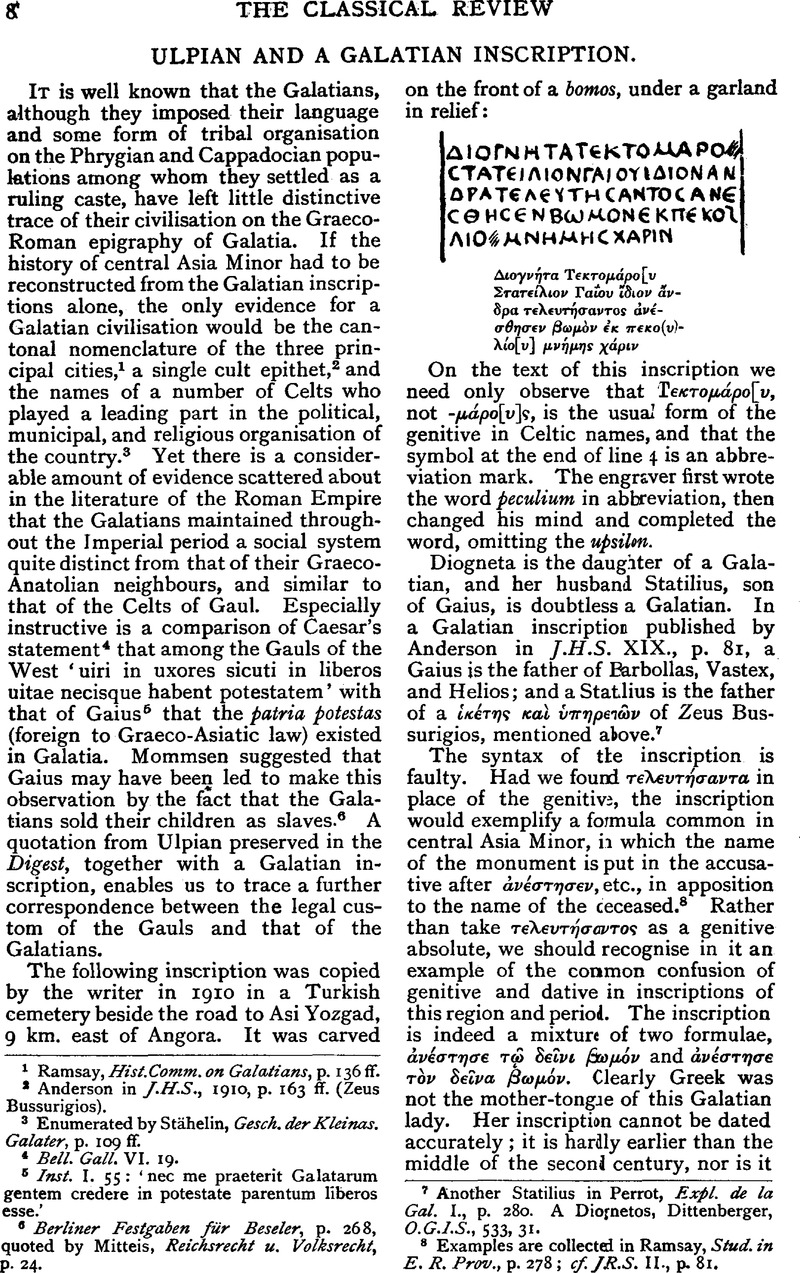No CrossRef data available.
Article contents
Ulpian and a Galatian Inscription
Published online by Cambridge University Press: 27 October 2009
Abstract

- Type
- Review Article
- Information
- Copyright
- Copyright © The Classical Association 1923
References
page 8 note 1 Ramsay, , Hist.Comm. on Galatians, p. 136 ff.Google Scholar
page 8 note 2 Anderson, in J.H.S., 1910, p. 163 ff. (Zeus Bussurigios).Google Scholar
page 8 note 3 Enumerated by Stähelin, , Gesch. der Kleinas. Galater, p. 109 ff.Google Scholar
page 8 note 4 Bell. Gall. VI. 19.
page 8 note 5 Inst. I. 55: ‘nec me praeterit Galatarum gentem credere in potestate parentum liberos esse.’
page 8 note 6 Berliner Festgaben für Beseler, p. 268, quoted by Mitteis, Reichsrecht u. Volksrecht, p. 24.
page 8 note 7 Another Statilius in Perrot, , Expl. de la Gal. I., p. 280Google Scholar. A Diofnetos, Dittenberger, O.G.I.S., 533, 31.
page 8 note 8 Examples are collected in Ramsay, , Stud, in E. R. Prov., p. 278Google Scholar; cf.JR.S. II., p. 81.
page 9 note 1 Dig. XXIII. 3, 9.
page 9 note 2 Dig. XXXII. 11 pr.
page 9 note 3 Op. cit., p. 285.
page 9 note 4 Bell. Gall. VI. 19. Did the ‘pecuniae … dotis nomine acceptae’ include the peculium, or was Oat peculium a separate item, passed over by Caesar as unimportant?
page 9 note 5 Op. cit., p. 266 f.
page 9 note 6 Mai, A., Scriptorum Veterum Nova Collectio, X., p. 70.Google Scholar
page 10 note 1 The theory stated by Ramsay, in H.G.A.M., p. 397Google Scholar, regarding the relation of Anabura to Neapolis would place the inscription, which mentions Anabura, before A.D. 75; but Ramsay has withdrawn this theory in A.B.S.A. IX., p. 250 f. The name Aurelius, as used in the text, points to the third century.
page 10 note 2 Was προίξ a general term including φρνη and παρφɛρνα?




